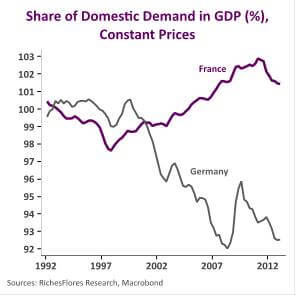
After losing virtually all influence over the euro-dollar exchange rate since the beginning of last year, interest rate differences seem to be making a comeback, in the wake of rising oil prices. If renewed sensitivity continues, it could have a profound impact on exchange rates. If the euro-dollar exchange rate pair normalized with respect to its long-term reaction function, the economic conditions currently prevailing in the United States and Europe would imply a euro below parity with the dollar.
Until recently, however, the reaction function did not hold sway. It was weakened by structural deterioration in the outlook for the US economy, and many economists who believed in these models were caught unawares all through last year. With this in mind, let’s examine whether rising oil prices could normalize the situation and push the dollar higher, and as a corollary, the euro lower.


